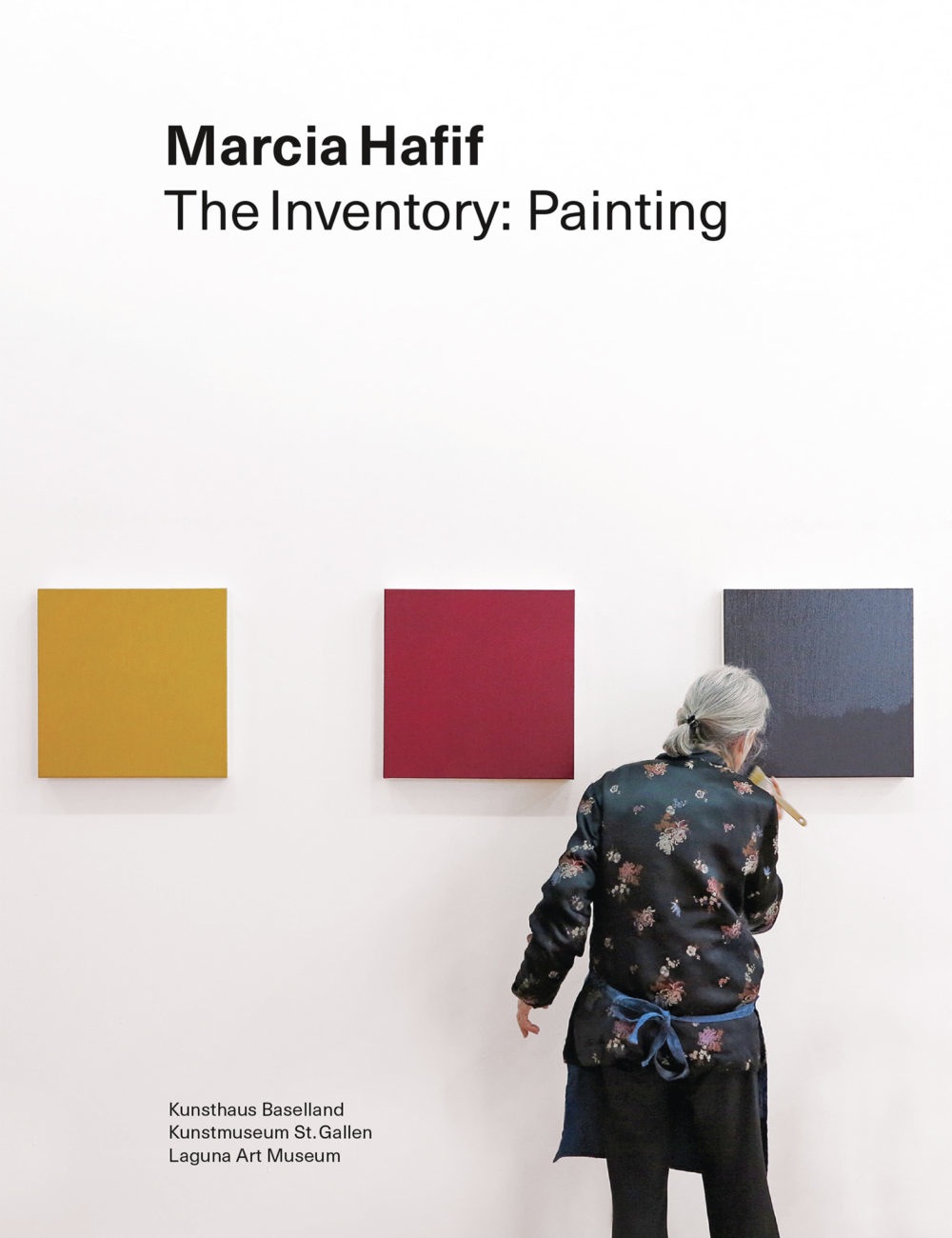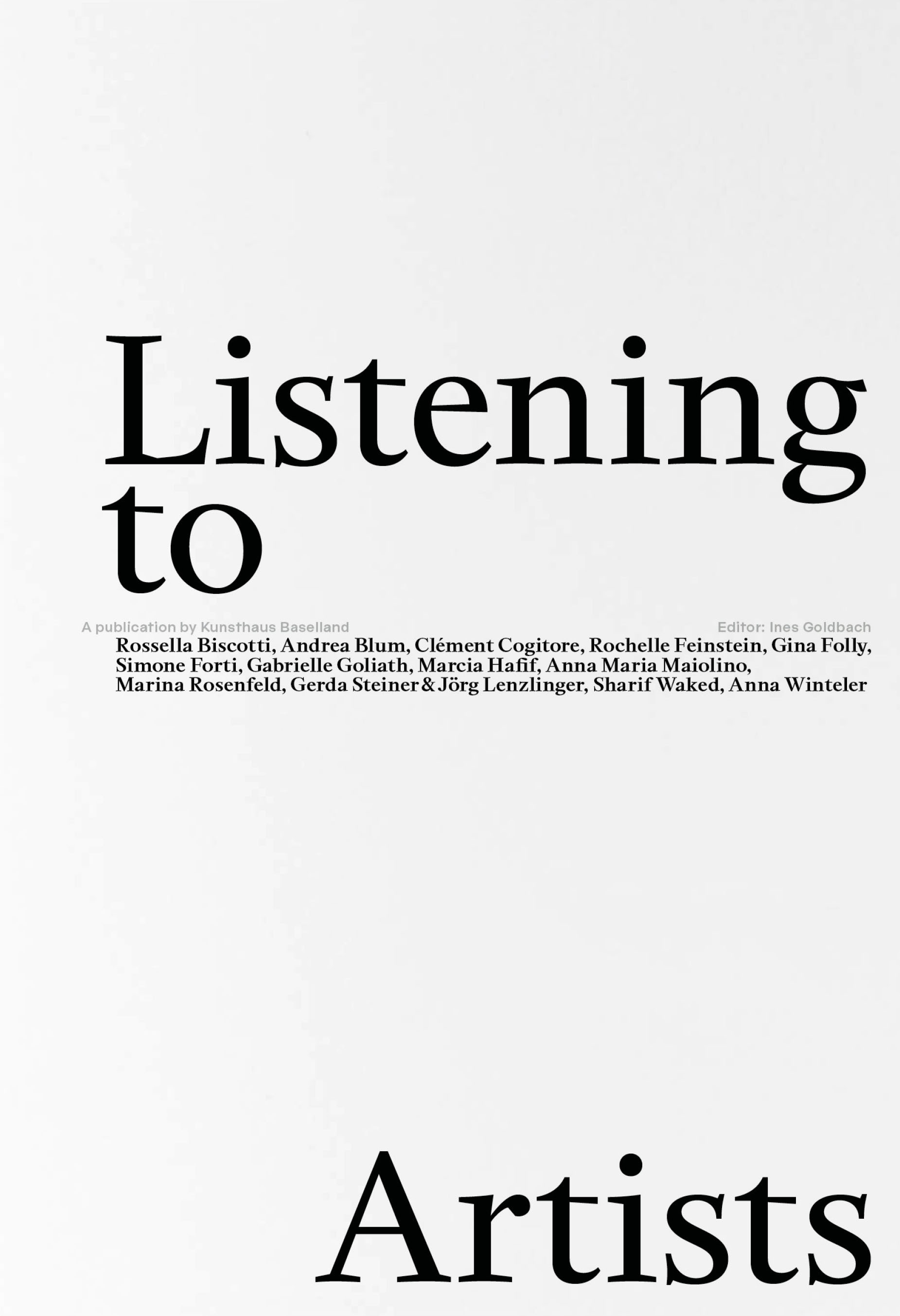Marcia Hafif
15.9. —
12.11.2017
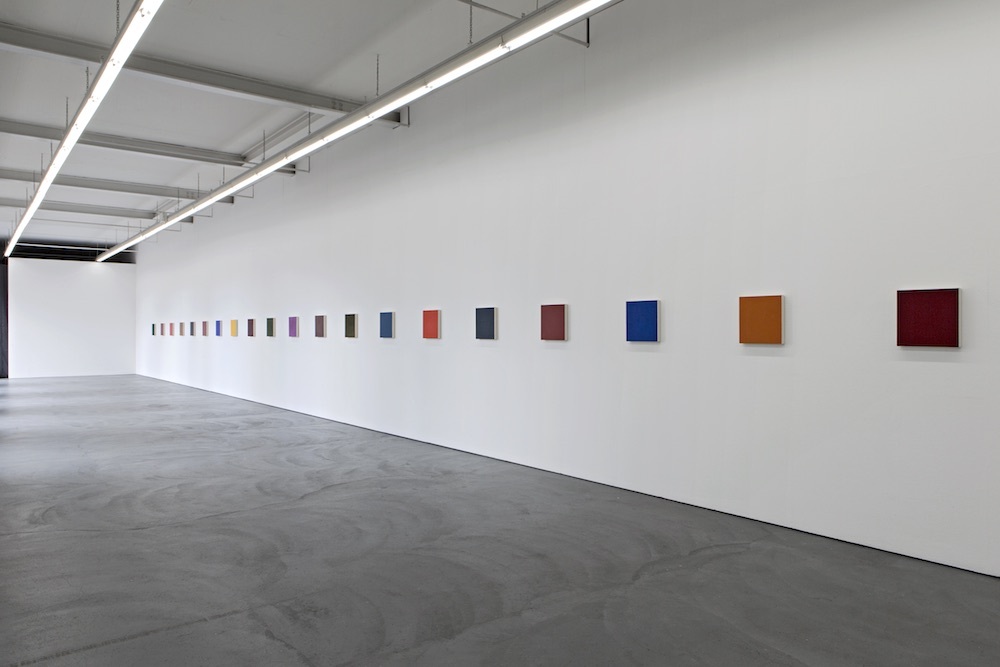
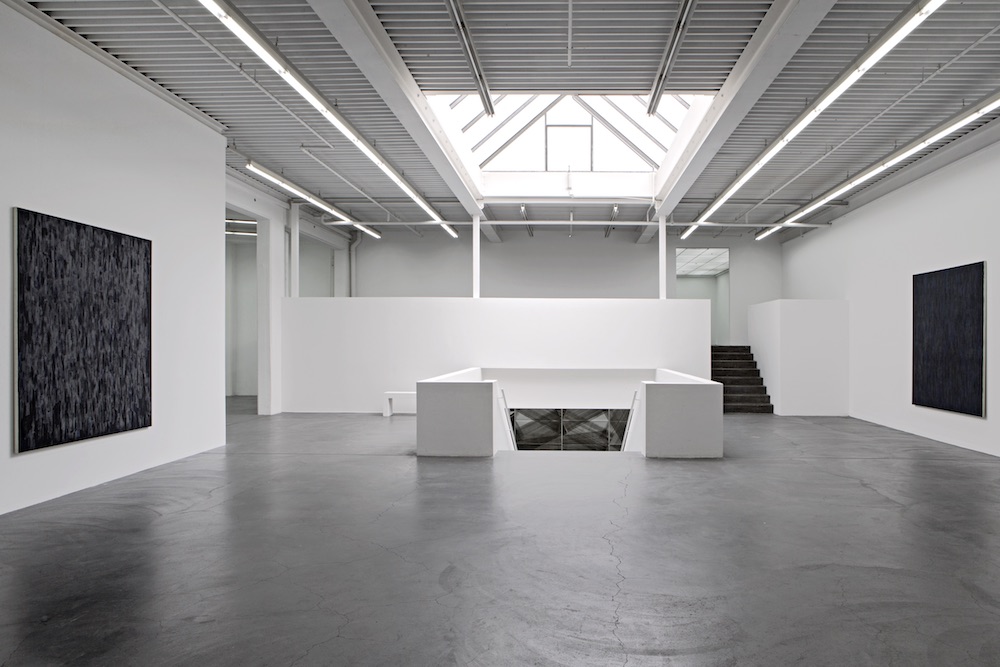
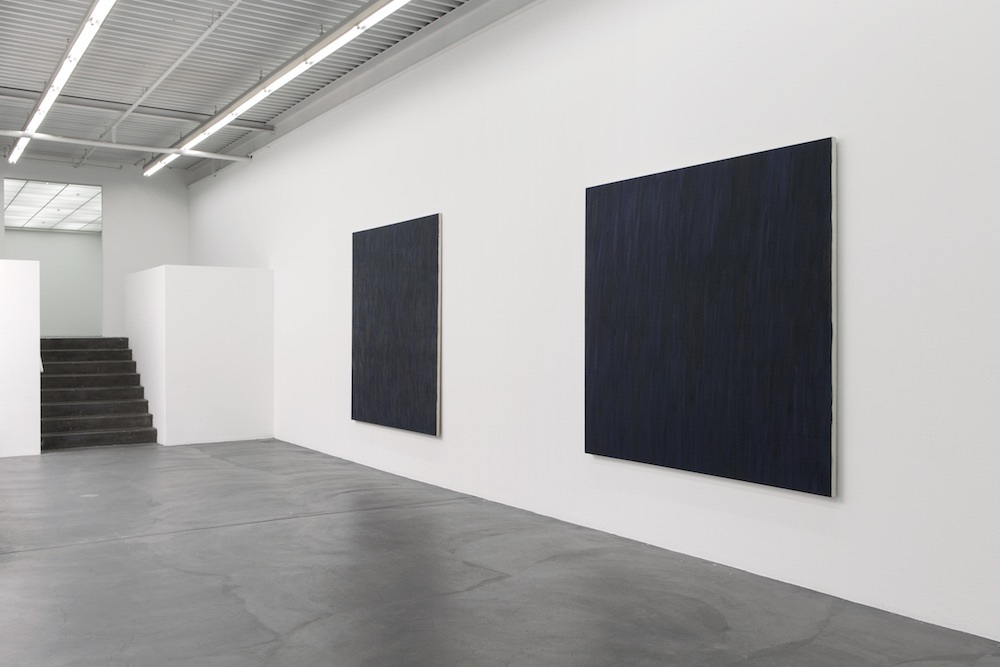

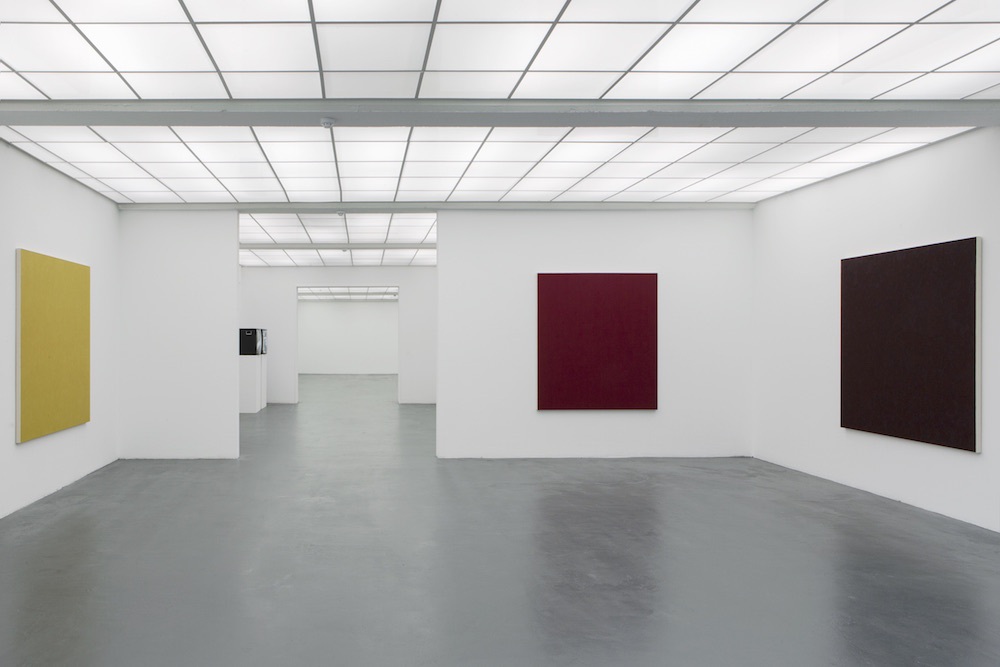
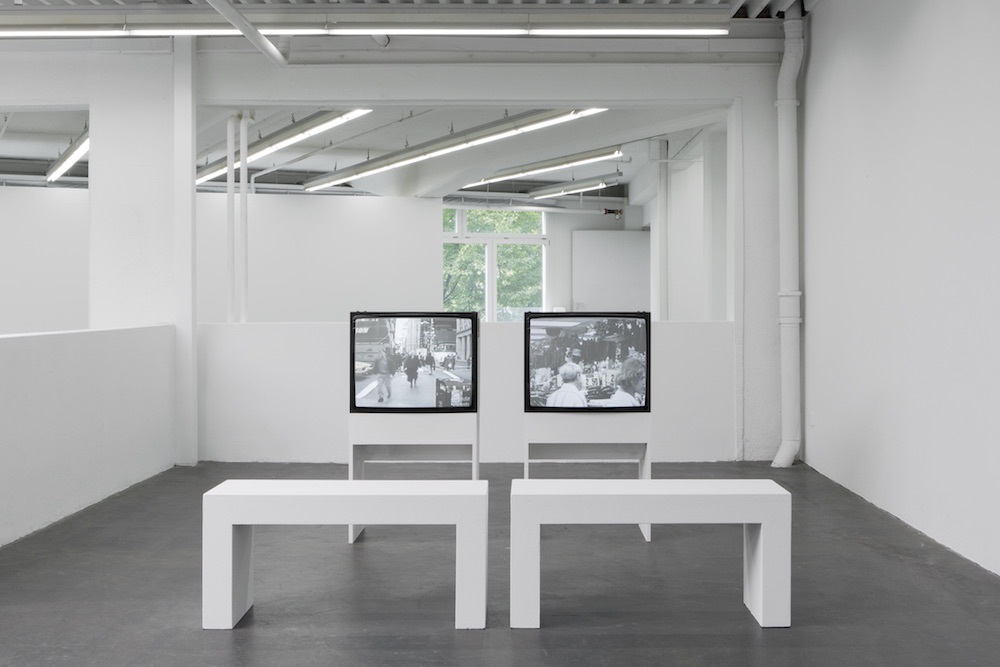
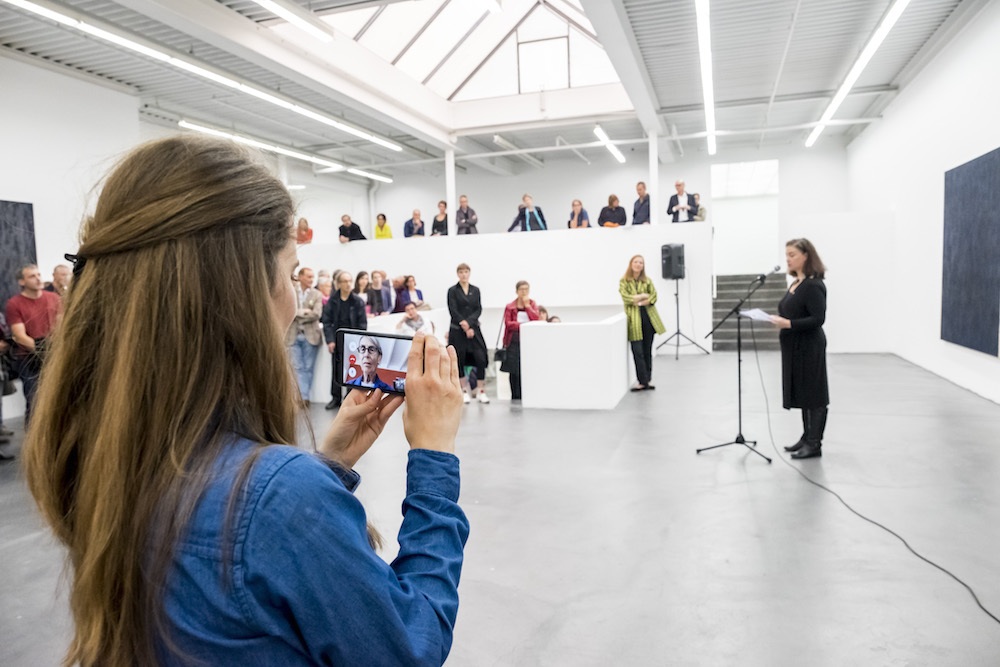
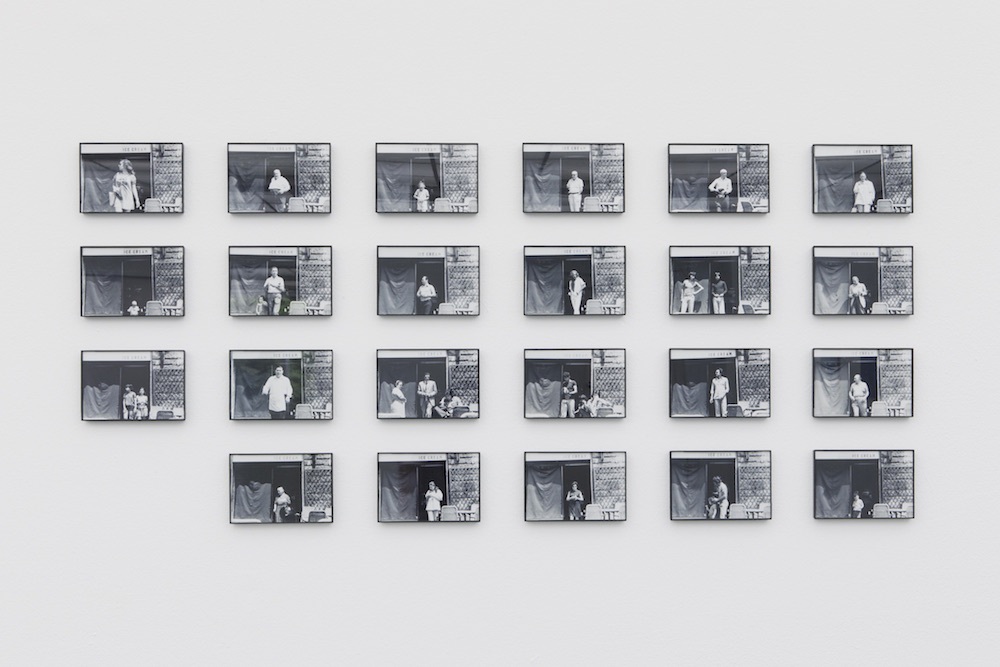
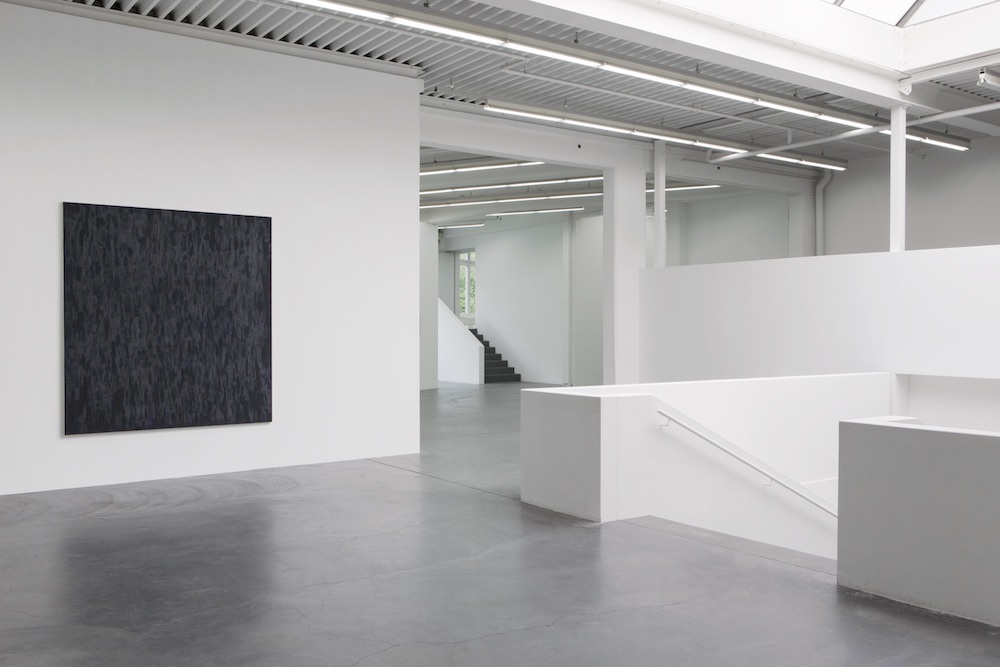
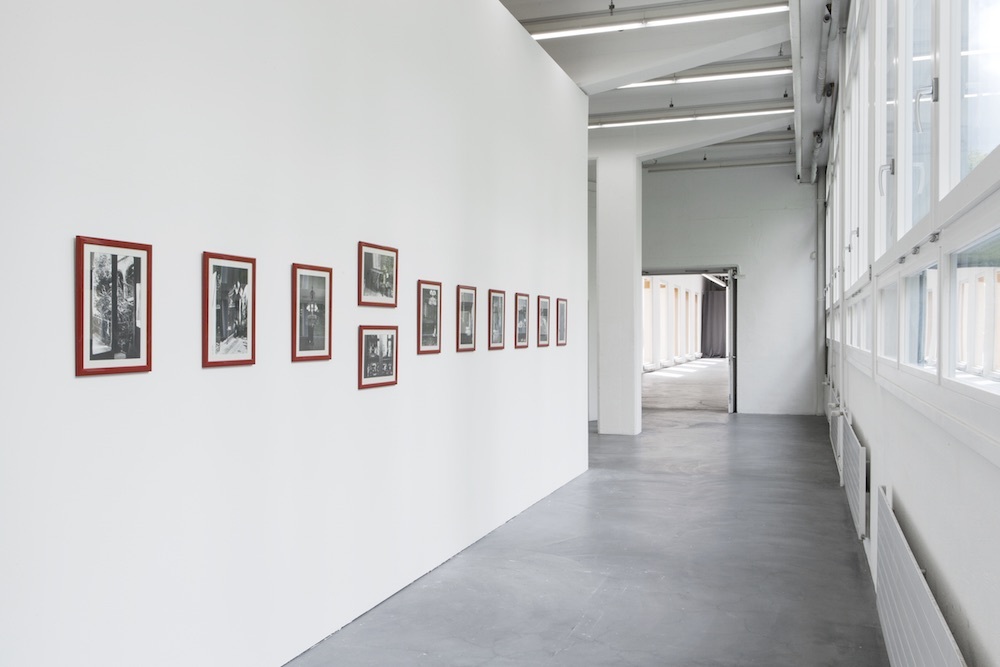
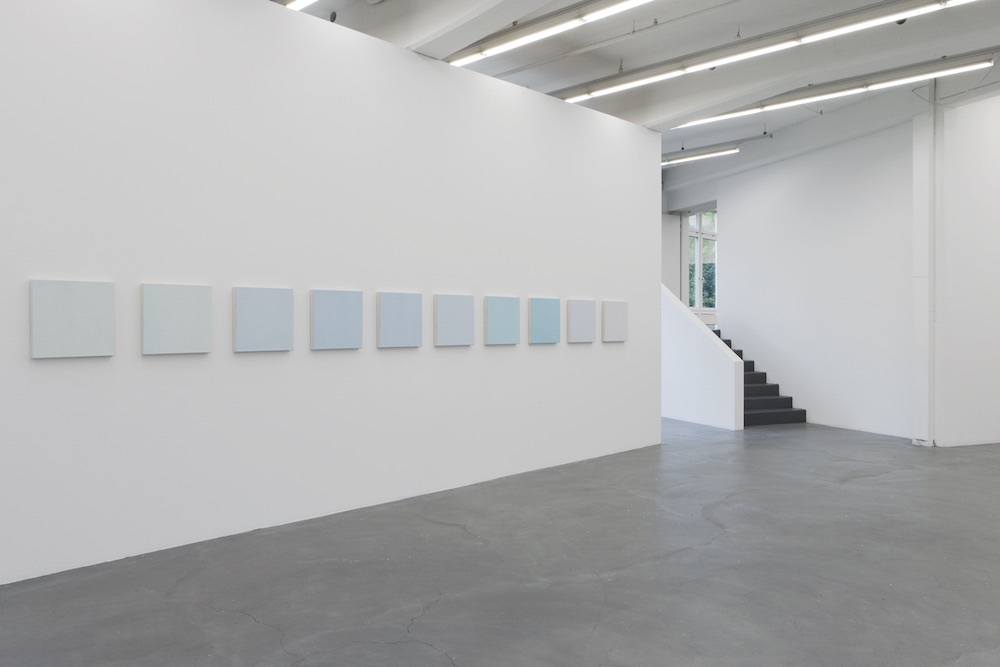
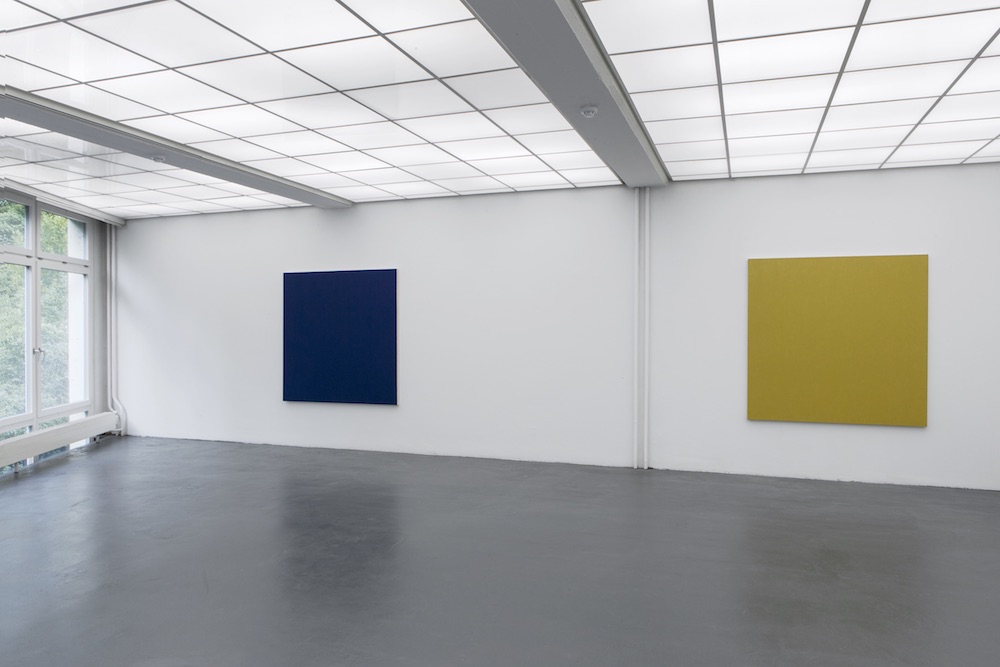
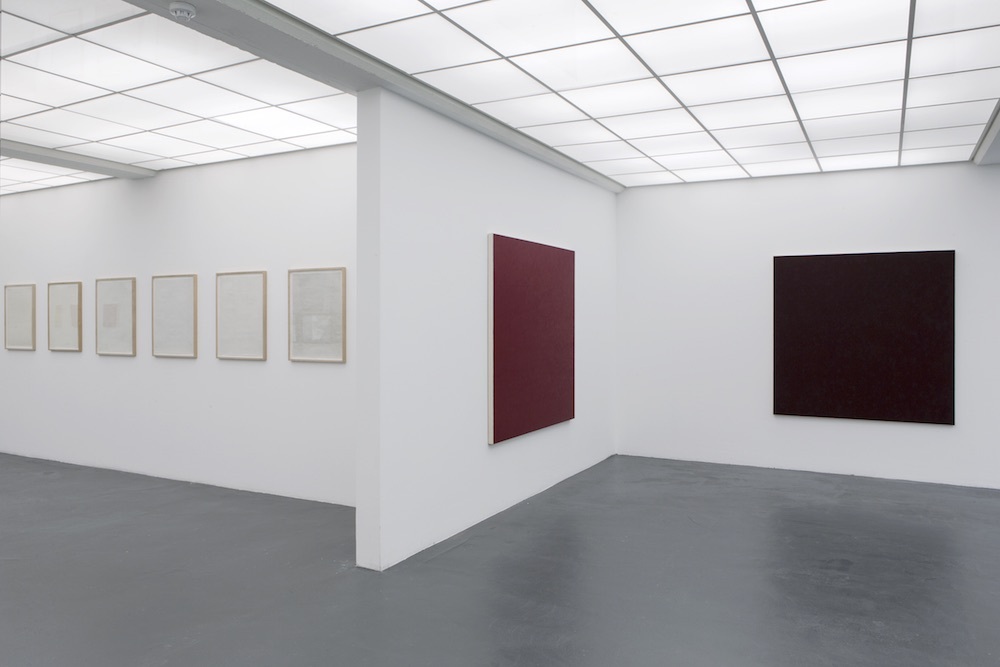
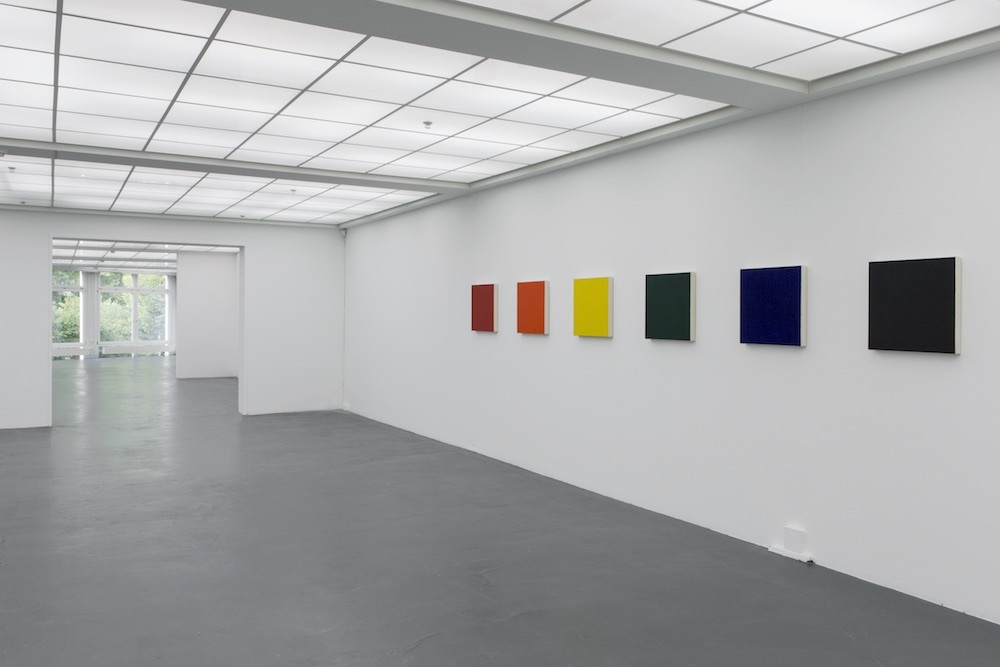

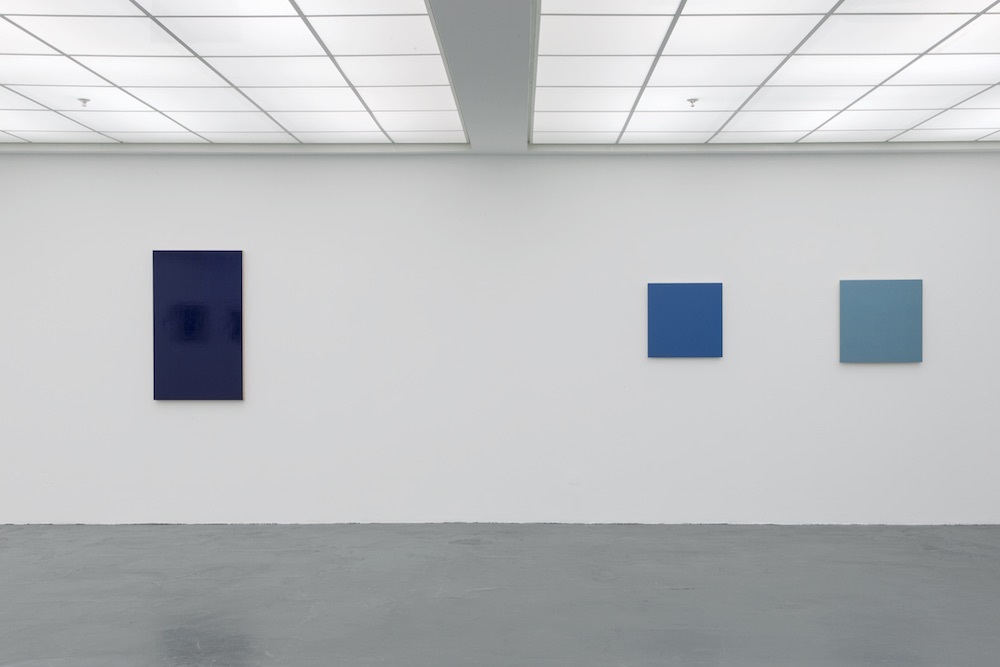
Marcia Hafif is among the pioneers of the 1970s who fundamentally broadened conceptions of the practice of painting and understanding of art per se. Since the 1980s, terms like ‘radical’ have been used to describe Hafif’s work with monochrome painting. The pencil on paper drawings, vertical pencil marks covering a surface, begun in 1972, led to the vertical stroke in paint. Her work in both mediums still continues, fitting within what she calls The Inventory. Each series included in The Inventory develops a single medium using traditional methods and materials for making paint and preparing a ground. Individual works in a series can be larger or smaller, and usually are made with vertical brushstrokes, with which the effects of unmixed colours on a suitable painting ground are sounded out. Works from the series that may be her most radical will be exhibited at the Kunsthaus Baselland: the Black Paintings(1979/80) in which she found black by layering ultramarine blue and burnt umber. For the first time there will also be photographs and films on display, side by side with her paintings, drawings and texts.
Two exhibitions, one artist: To do justice to the work of the exceptional artist Marcia Hafif (*1929, Pomona, CA), which she has developed for almost seventy years, it seemed fitting to conceive a retrospective for Switzerland spanning two institutions in order to best present this extensive oeuvre in its richness and variety. As early as the 1970s, Hafif was among the artists whose understanding of painting had an early influence on European art. From 1961 to 1969, she painted in Rome, where she was living at the time, in the tradition of American Hard-Edge painting. Invited by Thomas Krens to exhibit at the prestigious Williams College in Williamstown, MA, in 1984, out of solidarity she assembled twelve painters with similar conceptual approaches in the exhibition Radical Painting. “Radical painting” stands for a monochrome style of painting that examines the pure effect of color on a canvas without any pictorial character. Even though Marcia Hafif does not like this term to be used for her own work, it originated with her.
The impressive series of works developed since the 1960s fundamentally explored the possibilities of color field painting and continually expanded them with new aspects. To do the unexpected was Hafif’s trademark, so to speak. An Extended Grey Scale (1973) with 106 paintings is one such series, as are her famous Black Paintings (1979–80) — perhaps her most radical works — in which she achieved a deep black by layering ultramarine blue and burnt umber. Her latest series of Shade Paintings (since 2013) stand alongside her two-tone, vertically divided TGGT series (Tomatoes, Grapes and Green Tea; 2006) in an empirical approach to the golden ratio, as well as the brilliant transparent colors of her Glaze Paintings (1995). In the 1970s, Marcia Hafif also began to use film and photography alongside her painting and to develop them artistically — for example, in photographs such as Pomona Houses (1971), Roman Sundays (1968), and in films such as Letters to J-C (Broadway) and Ideal Woman from 1999. The artist’s concept of The Inventory encompasses her major discovery of the effect of colors, which she implemented in gradients, brushstrokes, and lines, as well as in the development of ideas in series and pictorial fields and in her exploration of different genres, including photography, film, and text as well as painting and drawing.
Text by Ines Goldbach and Roland Wäspe
Text from the publication Marcia Hafif
The exhibition at Kunsthaus Baselland was generously supported by the Roldenfund, Hans und Renée Müller-Meylan Stiftung, Novartis, Embassy of the United States of America as well as the partners of the Kunsthaus Baselland.
Marcia Hafif in conversation with Ines Goldbach, Laguna Beach, 24/25 July 2017
Ines Goldbach (IG): How did you start taking photographs? There are many early photographs from the 1960s and ‘70s; at that time you were also painting important works like the Black Painting series, for example.
Marcia Haff (MH): What happened is that when I went to Italy in the early 1960s, and in 1961 a friend gave me a camera, just a little camera. I used it to take photos of my paintings but then I had a baby, and once you have a baby you have to photograph the baby! I did that a bit and then we had a friend who lived near Via Barbuino in Rome. He was a famous photographer called Tony Vaccaro. He is not well known in the art world, but he is as a World War II photographer. By the time I knew him in the 1960s he was a photographer for Life magazine and he was sent everywhere to photograph famous people for magazines. I was thinking about photography and Tony said I needed a good camera. He came with me to a photography shop and examined what was there and decided which one I should have. I bought that camera and he showed me how to work with it. It was pretty simple in those days.
IG: So he inspired you to use the camera in a professional way?
MH: Well, what he did was that he gave me the address of the laboratory that printed his photos, and so I got mine printed there too. When they came back, they looked wonderful. I really felt like a photographer. Not all of them were good, but some of them were. So I continued photographing in Rome. A lot of my photos were of my son on the beach or in the city. Then I began photographing other things in Rome that I liked — like windows that interested me. But I left Rome and then taking pictures in New York changed the direction. But I still continued.
IG: Most of your photographs were black and white, even later on, is that right? Compared, for example, with the films where you used colour and the recent photo series which are also in colour.
MH: The early ones were all black and white, yes. They did not become colour until I came to Laguna Beach in 2000, and then I began photographing in colour. These are from an iPhone. It was a gradual transition from black and white photographs using film to colour film and then to colour without film, to digital. This is happen to everything. The longest film that I made is an hour long, Notes on Bob and Nancy. I began when I was a student at the University of California, Irvine, and I had a couple of friends and used them as the subjects of the film. I was shooting black and white still photos, then filming but with no sound. I was using Super 8, and suddenly there could be sound with Super 8, then colour. So this longer film, and the media, developed in tandem.
IG: The photo series Avenida Madera is the only one framed in red. Why is this? You mentioned once that it was a deliberate decision.
MH: When I began to show more photographs, I realised that I did not want to adopt a ‘signature frame’, like all the early black and white photographers using a white background with a black frame. I thought that each series could have an appropriate frame, and for Avenida Madero the colour red came to mind. In the frame shop I had to choose the spacer and the details of the frame, but I liked the narrow, shiny red frame. I have not used it on any other group. For the 4 x 6 inch series Roman Sunday I wanted an inexpensive, easily available frame where I could insert a photo and take it out again because there are so many of them. One thing I do not like about frames is that they need to be damaged to remove the framed work. For Ideal Women, a series of black and white photographs, I used cheap metal frames with a tilting stand in the back that could be placed on a table or desk. Another group in colour, J.C. at La Ciotat, (10 or 12 photos), was installed unframed, each image held up by magnets. The new iPhone photos are mounted on aluminium and spaced from the wall, unframed.
IG: Could you tell me more about the two series Avenida Madero and Roman Sunday? What motivated you to take these pictures?
MH: Avenida Madero (Madero Avenue) in San Luis Potosi, Mexico, was the location of my Aunt Irma's house. I shot the photos visiting there soon after she died; her daughter was showing me around the house. The Roman Sunday photos were shot in 1972, one Sunday in Trastevere, Rome. I set up the camera in the piazza - Santa Maria in Trastevere — and captured each person who came out of the cafe. 70 in all, on 2 rolls of film.
IG: Your short films also remind me of your photographs a great deal, as the camera is often focused on one image, sometimes not moving for minutes at a time, like a still. Instead of a narrative, I think it’s more about looking intensively at a subject. At the same time there is always music in your films. Do you record this while filming?
MH: Yes. I played the music while I was shooting. I turned on the music and filmed.
My camera focussed. In the ‘90s I was in London and at that time I heard about Olivier Messiaen and his music and his interest in the sound of birds. I also liked Erik Satie very much — so one of the films also has music by Satie, when you are watching the Ideal Woman and she looks like she is waiting for someone. This kind of music while she is sitting in a bar waiting, but nobody ever comes; she is left alone.
IG: I think the music is also something that draws the viewer into the film.
MH: Yes, it does. That’s why I used the music.
IG: You just mentioned the film Notes on Nancy and Bob. Your second long-duration film is India Time. How long were you in India to make this film?
MH: I guess it was about two or three weeks. At that time I was living with Robert Morris and he was invited there to do some work. So I also went and began to make some paper works and drawings — and I also had a camera so I took pictures. We went to Kashmir too and I took more pictures there. Afterwards I spend about a year in New York creating the film.
IG: Together with the films, photography and of course painting and drawing, writing has always been an essential part of your work — reviews and texts on exhibitions and painting in general like the essay Getting On with Painting that was published in Art in America in 1981, as well as other essays and texts — some in connection with films, other not. And you’ve also mentioned a longer text you wrote in recent years.
MH: Yes, I have written what I call a book, which is 250 pages that I have never really published but I allowed a few people to read. I call it a book because it isn’t a novel. It’s various narratives and it’s also pretty autobiographical, ranging from descriptions of things that happen and places, to just everyday thoughts, sitting here in my studio thinking about this. Meditations on old age — before I consider myself old [she laughs]. It’s neither a memoir, nor a novel. Most of all, it is a collection, of writings I have done at different periods of my life, often in notebooks, sometimes even in e-mail, which doesn’t always fit together properly. Starting ‘the book’ I realised that I write all the time, or previously I did more than I do now, and what I wrote came in different forms but I could bring them together: they were all coming from the writing part of my mind even when based on different experiences.
IG: Reading your texts and looking at the films, photographs, drawings and paintings I see a parallel artistic attitude. Can you describe why you are interested in writing when you are painting or drawing at the same time?
MH: My writing is sporadic, I write when there is something I really must write about. At times an accumulation of notes adds up to a larger outcome, like when the notes on my painting table made my 1978 article in Artforum, Beginning Again, or even, on the other hand, when a critic made a mistake as to the dimensions of a Ryman painting, and I saw that and it had to be corrected. Or there are certain moments when something very specific happens; it’s always a kind of experiment, like with the paintings where I paint something to see what it looks like: that technique, that mix, that colour that size, etc. They are experiments, but ones focused on an event, something catching my attention, even a plan at times. The video and the films came about in this way too, when my attention is caught, and I want to make a longer film after enjoying smaller, shorter ones, or I’m drawn to the unusual weeds suddenly and unexpectedly appearing in my garden.
IG: I am very curious when I read quotations taken from this book and other texts you’ve published and see them next to your paintings, photographs, films and drawings. I think you’ve only rarely shown all these together, or could it be that you’ve never done so before?
MH: I once included some photographs with paintings in a gallery show. When I showed films, I showed them separately. So yes, it will be interesting to see all of them together, creating something new.
During Marcia Hafif's exhibition the solo exhibition by Maja Rieder was also on display.
